Everything smelled of deet and peanut butter.
The scent had worked its way into everything we owned and by that point, our PB&J consumption had become so high that I imagine our bodies were at least 1% Skippy. The mosquitoes and ticks were still raging and we swatted incessantly at phantom bugs and scratched our bites into oblivion, causing bloody scars to pop up all over our skin. At night, you could hear the constant whirring of skeeters – waiting and hungry.
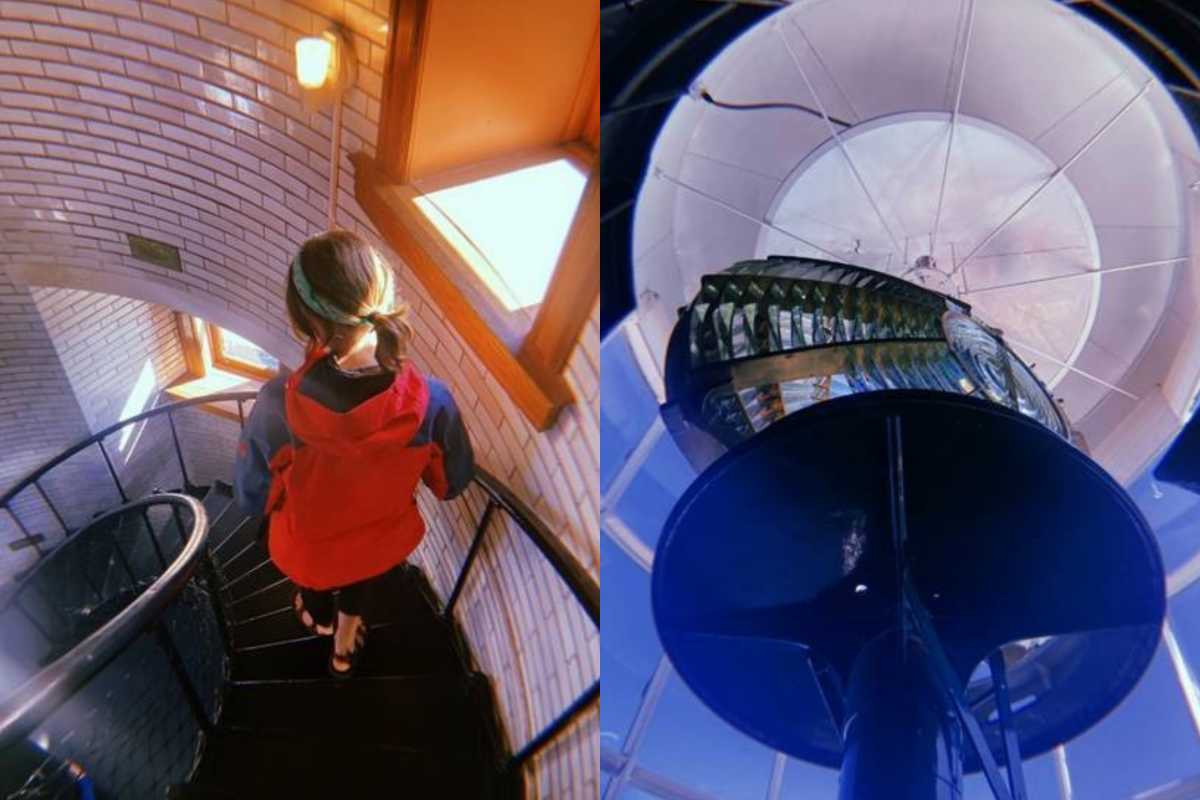

Inside Split Rock Lighthouse, Two Harbors, MN.
The weekend before our last week in Chippewa, we headed east toward Lake Superior. The world’s largest freshwater lake, Superior is shared between the U.S. and Canada, bordered by Ontario, Minnesota, Wisconsin and Michigan. We started out in Duluth, MN, a hoppin’ harbor town just west of the Wisconsin border where we camped for the first night. In the morning, we followed the coast up further north to visit Gooseberry Falls and Split Rock Lighthouse where we learned about the dangerous cliff faces that led to many a ship’s and sailor’s demise. In the evening, we camped out along the lake and listened to the waves crashing against the shore.
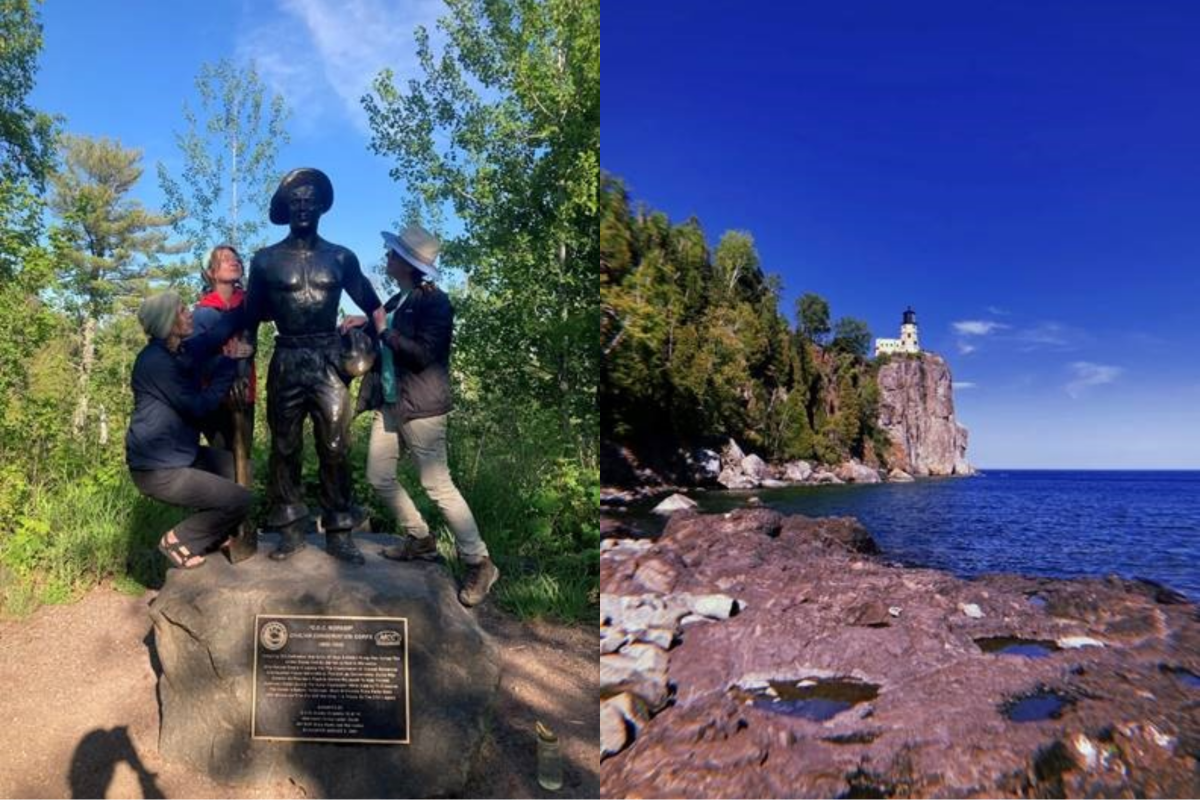

Just honoring and admiring our boys in green (left). View of Split Rock Lighthouse (right).


Mud at the summit of Ely’s Peak, near Duluth, MN, looking all full of wonder and stretching out my beanie with his big head.
On Sunday, we took a ferry out to Madeline Island, one of twenty-two stunning islands along the Apostle Islands National Lakeshore. Once we reached land, we headed out on a hike along the coast, stopping out at little overlooks and scrambling along the rocky cliffs while the tide came in and out beneath us. We climbed off the sides, hanging above the crystal clear blue waters and finding hand-holds in the rocks. The rocky cliffs were perfect for jumping off and the lake looked terribly inviting, even though we’d surely be freezing once we got in. Moss, Mud, and I psyched ourselves up, got out of our jackets, and stepped to the edge. When we were ready to go, without warning, Mud pushed me in. It was painfully cold when I hit the water and I was filled with a desire to push Mud off a cliff. As any good leader would, however, I suppressed the urge.
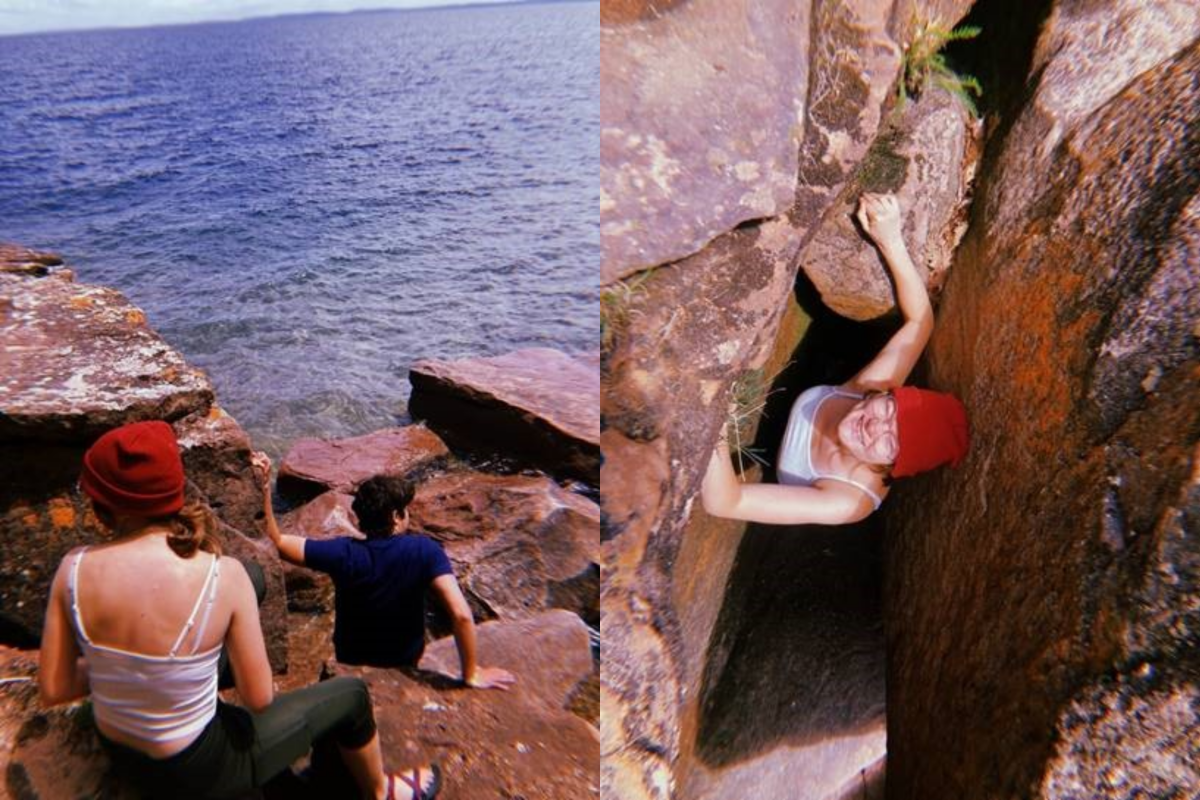

Moss and Mud scrambling on the rocks (left). Moss climbing and cheesing for her adoring fans (right).
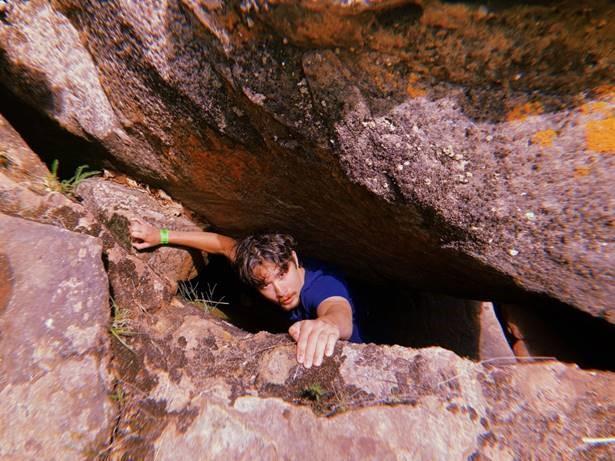

Mud trying to look all intense.
Our final week in Chippewa was a lot of driving around and searching for hidden campsites and boat ramps. We circled around lake after lake trying to find boat launches wedged between cabins and private land down windy, little dirt roads. We stared out at dozens of pristine, potentially leech-infested lakes while we shook more picnic tables and measured out tent pads, capturing all the campsite data for our surveys.
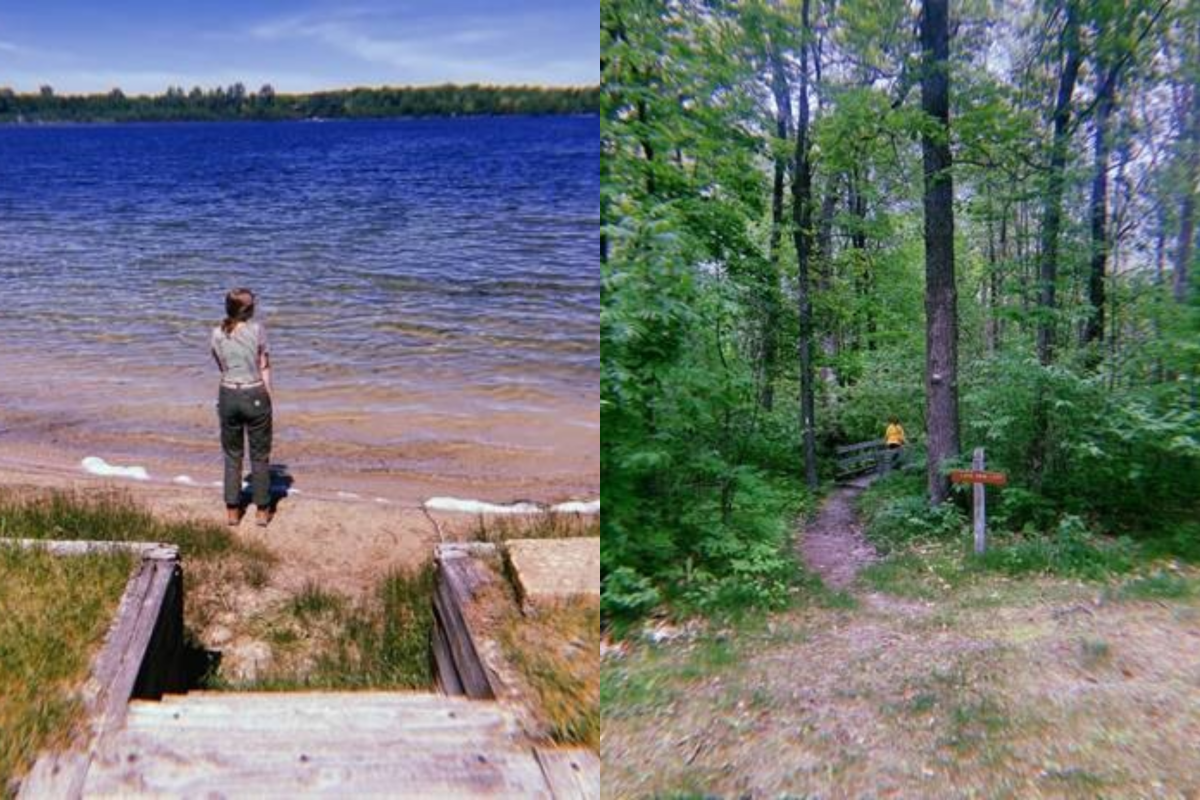

Moss checking out a lake in Chippewa (left). Moss checking the condition of a bridge (right).
We finished up with the last of our condition surveys on Thursday morning and headed back to the Forest Service office in Blackduck to meet up with our project partner, Ken, for a last hurrah. We handed him the last of our surveys and talked about our experiences over the last three weeks in Chippewa, before saying our final goodbyes and heading back to Camp Rabideau.
We attempted a seance in the old CCC infirmary that night, calling out to any willing and chatty ghosts, our citronella candles in hand. We tried to make ourselves sound as inviting as possible, at points pleading with the nothingness of the empty room for something spooky to happen. We reeked of desperation.
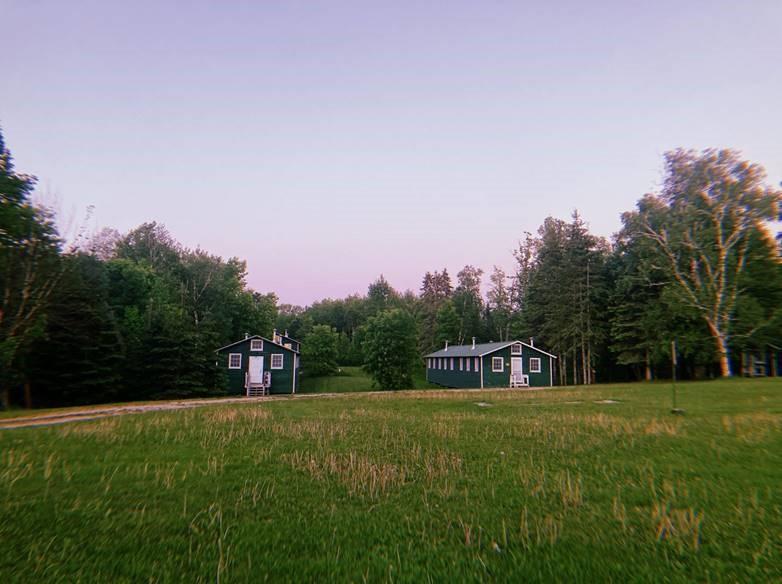

Evening shot of Camp Rabideau.
The next day we cleaned up the bunkhouse and then set off on the road back toward Duluth where we’d be picking up Ken’s replacement (the truck, not the man). We picked up a dark gray Toyota Tacoma, which we dubbed “Lil Taco”, and continued our drive east toward Ashland, WI.
The crew was heading back to college. We’d be crashing at a townhouse at Northland College in Ashland, a small, private school right on the Chequamegon Bay of Lake Superior. Unfortunately, as my crew keeps reminding me, I’m so horribly old that I probably can’t even remember college and now my image of it is of hacky sack playing youths in berets, smoking little cigarettes and arguing about Russian literature (this never actually happened at my college, but that’s always the image that comes to mind. Also, I’m only 24).
We pulled onto the campus excited to finally see some fellow youths, but arrived at a ghost town. Tumbleweeds were rolling through the vacant parking lot.
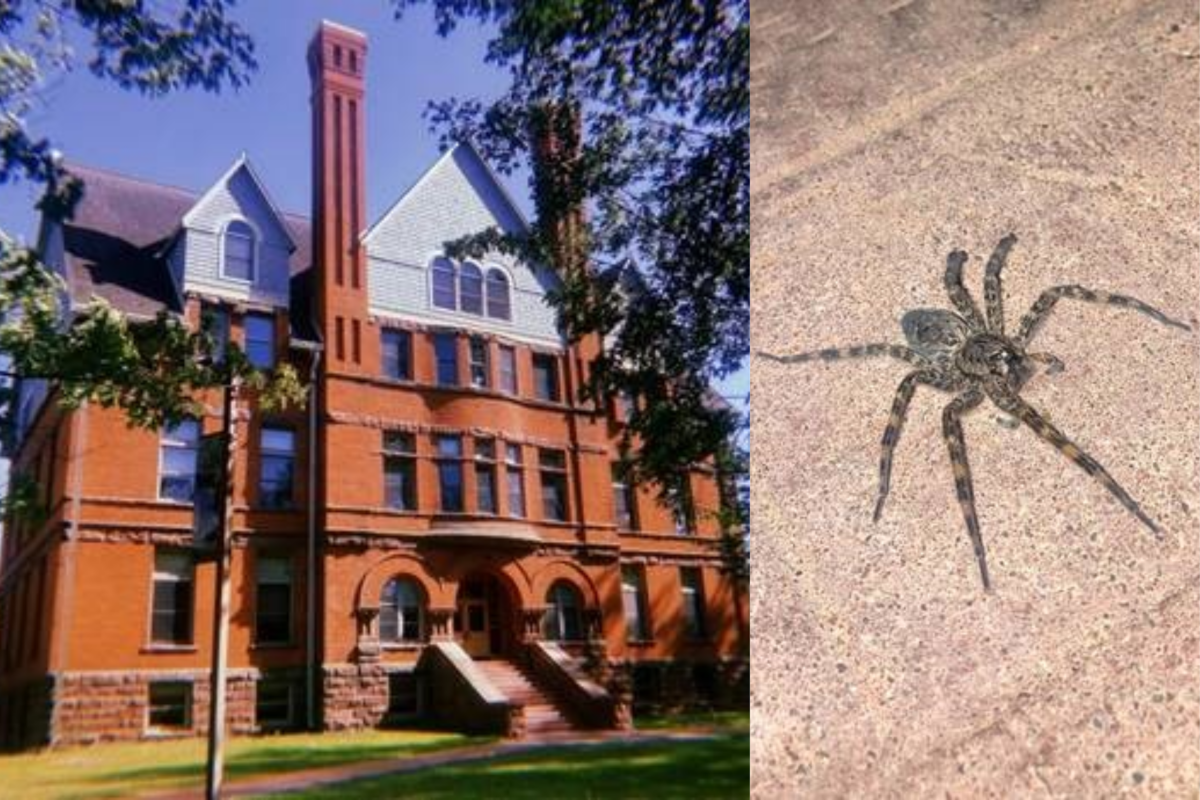

Building on Northland College campus (left). Wolf spider seen while on a night walk at Northland (right).
We split up for the weekend, Rock and Zircon staying in Ashland, and Moss, Mud and I heading up into the Upper Peninsula to meet some Yoopers (UPers), see some cool lighthouses, and go on a few good hikes. We visited the Copper Harbor lighthouse, the Eagle Harbor lighthouse, went on a couple waterfall hikes, and wandered around the remains of an old copper mine.
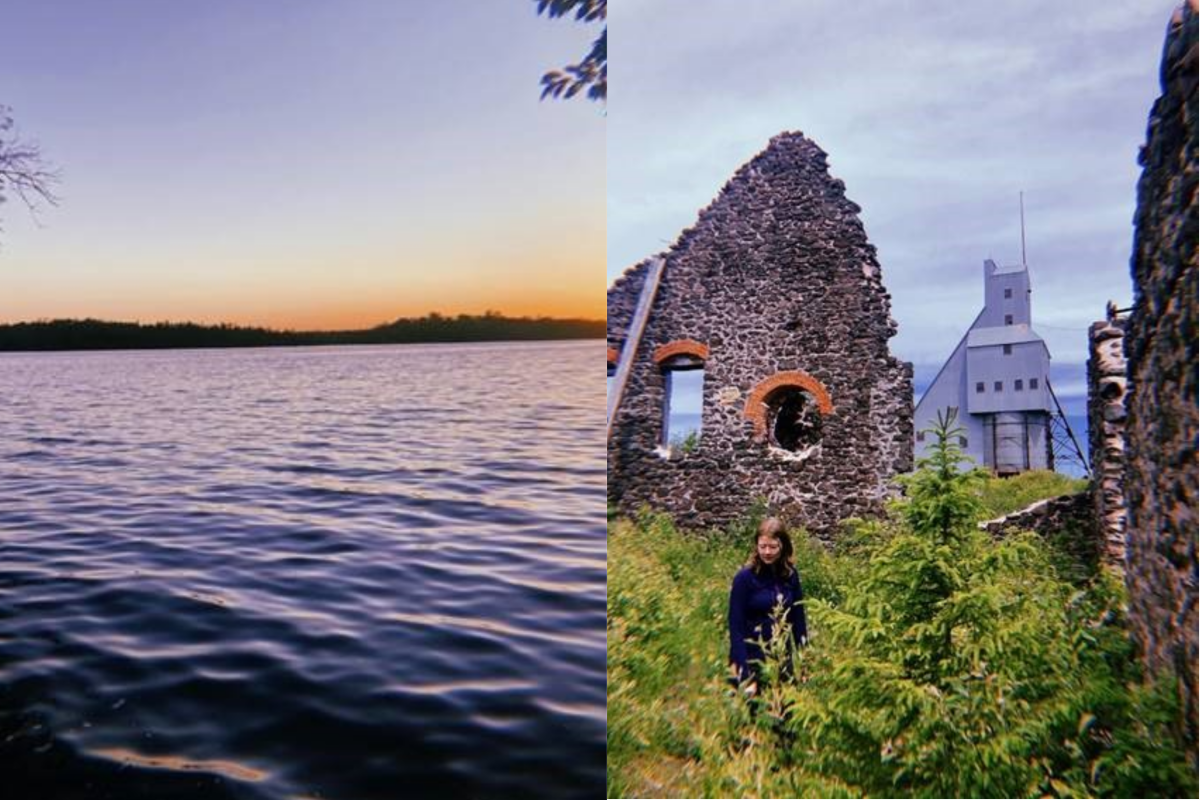

Evening shot of a lake in Michigan (left). Moss wandering around the remains of a copper mine (right).
On Monday morning, we drove an hour south to the Park Falls office of Chequamegon-Nicolet National Forest, where we’d be working for the next two weeks, and met up with our new project partner, Chad. Chad grew up in the UP, spent some time in the military, and worked for the Forest Service in New Mexico before moving with his family to Northern Wisconsin in the early 2000s. He was so welcoming and great at explaining our survey work for the Western Division of Chequamegon-Nicolet. We looked over the maps together and planned out our route for the next two days, hoping to have time for extra projects at the end of the week.
Our survey work went by in a flash. Our first day was a little slower, working with only one vehicle and getting used to a new format of condition survey, but we finished out a couple of big campgrounds and took some photos of them for Recreation.gov.
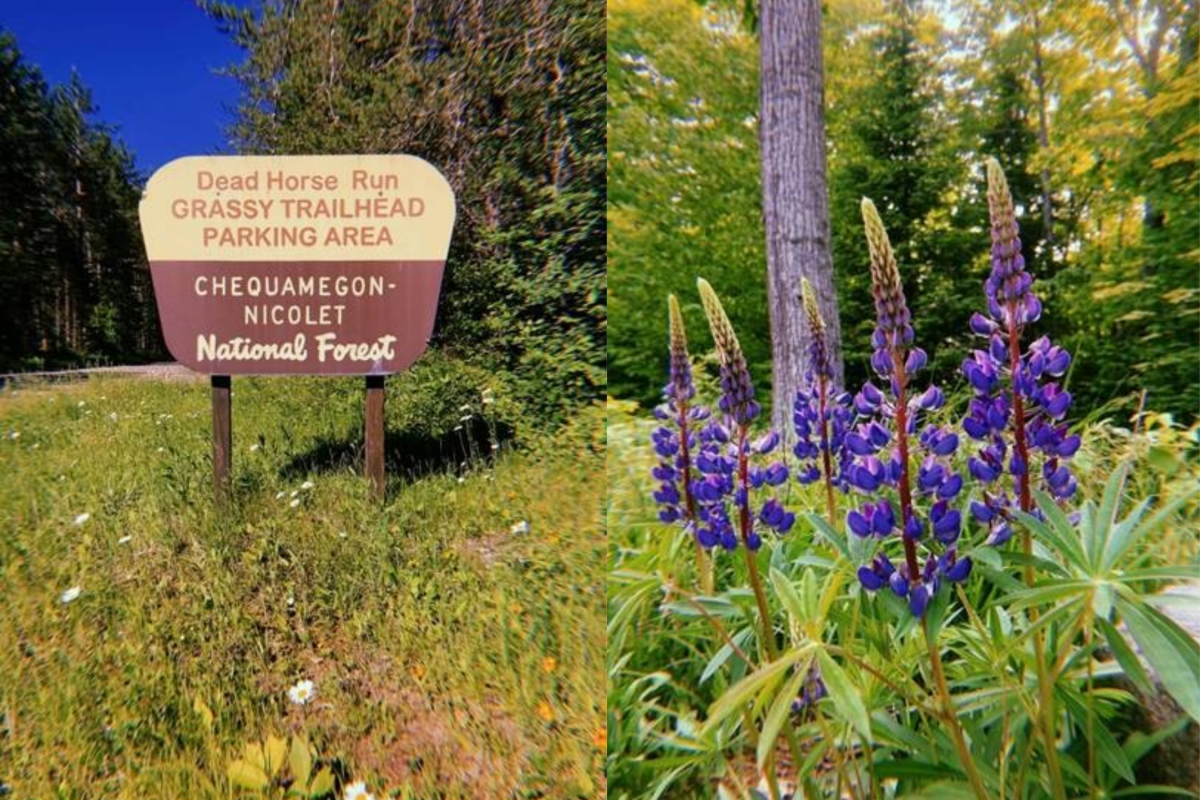

Dead Horse Run TH (left). Arctic Lupin is found along many of the roads in the Upper Peninsula of Michigan and Northern WIsconsin (right).
We were a lot more efficient the second day. Rock, Moss, and I headed out in Ed, and Mud and Zircon took off in the Lil Taco. Rock, Moss, and I jumped from trailhead to trailhead, passing through roads bursting with wildflowers along the way. At each trailhead we measured out the dimensions of vault toilets and pathways, and made sure all of the signage was still there and in good shape. While we zoomed through sites on the Great Divide and then headed up to the Washburn Division of Chequamegon-Nicolet, Zircon and Mud hiked out to a snowshoe trail shelter to check its condition. After gathering their data and walking the half-mile trail back to the truck, the two spotted a little black bear!
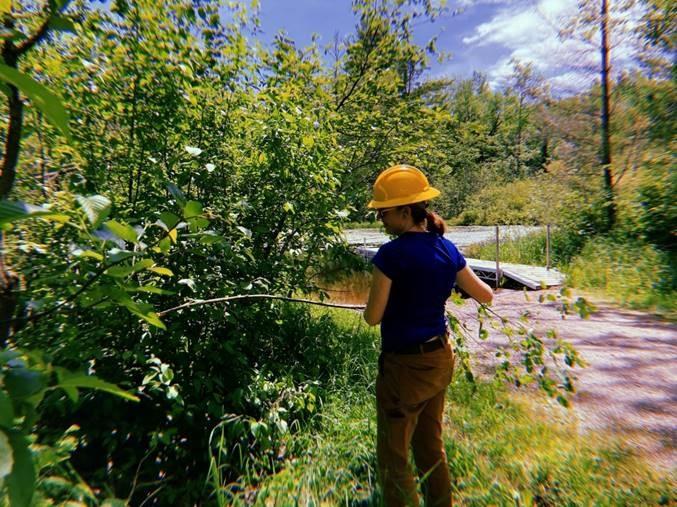

Zircon clearing away some brush at Perch Lake.
With our surveying completed, we still had two days left for the week. For the first, we worked with one of our other project partners, Katie, on grooming the roads and campsites at Perch Lake Campground, in the Northeast section of C-N National Forest. Katie came in first with a chainsaw, sawing down small trees along the edge of the road that were overgrown and narrowing the corridor, and then the rest of us came in with brush saws and loppers to trim and remove trees and vegetation from the edges of the roads and campsites. We spent the day working at both the south and north campsites widening out the paths.
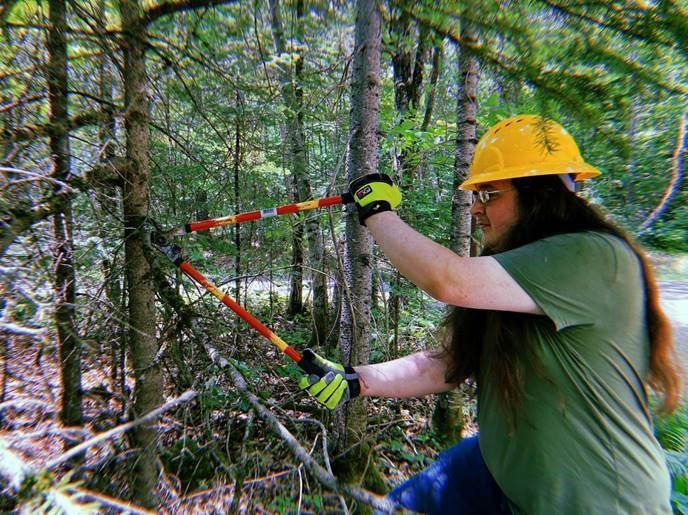

Rock lopping near one of the campsites at Perch Lake.
The next day, we headed two and a half hours south of our home in Ashland to Chippewa Campground, where we would be helping Katie, Chad, and a few other Forest Service folks with installing a fishing pier. Together, we worked to push the big, bulky structure back out into the water and bolt the two main pieces of the pier back together. Due to the cold winters in Northern Wisconsin, the fishing piers need to be removed from the water every year and put back in again once the weather heats up.
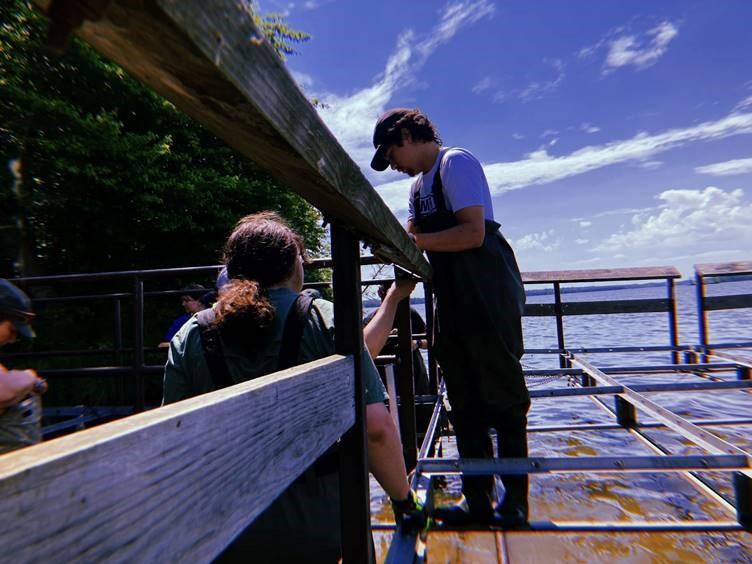

Rock and Mud helping put the fishing pier frame in place at Chippewa Campground.
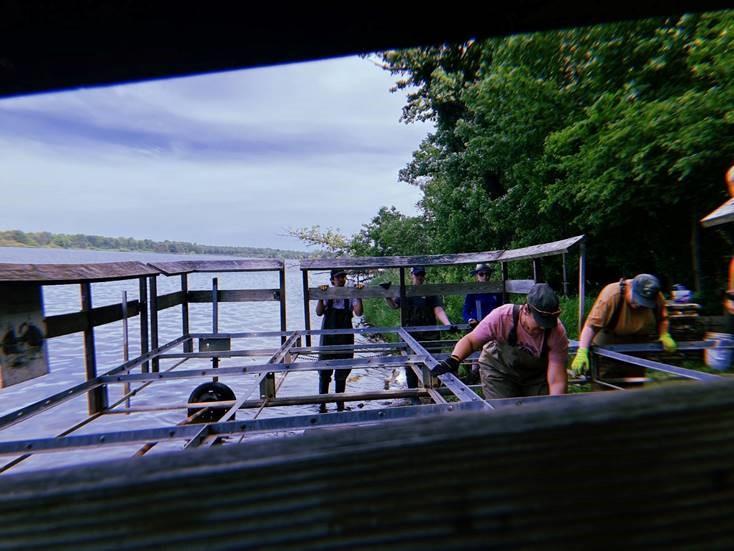

Mud and Zircon watch as some Forest Service folks bolt two parts of the pier together.
This process takes a lot of people to do it quickly. Even with 10 of us, it took around two and a half hours and a lot of adjusting of the structure to get it secured correctly. Once we had the frame in the right spot, we were able to come back in and set all of the wooden planks in place, and make the pier look nice and professional.
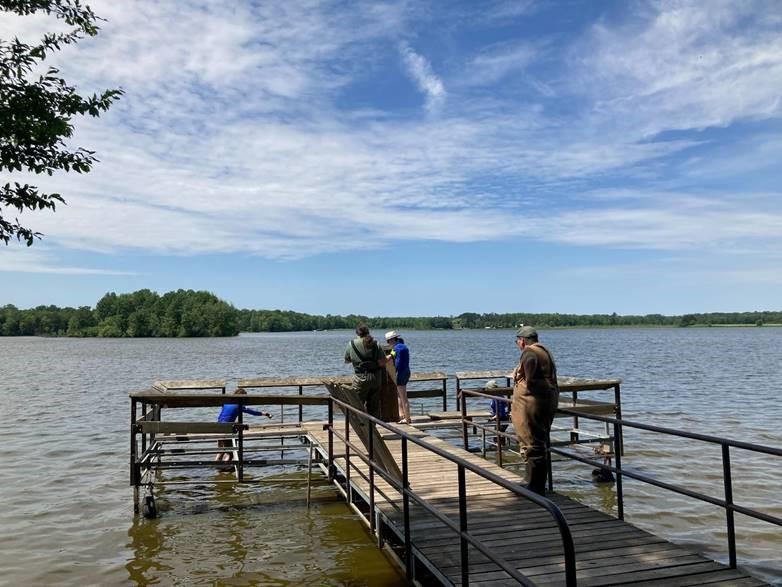

Putting in the last of the wooden planks.
After finishing up with the pier, we said our goodbyes to Chad and Katie and then headed back on the road for another weekend. This time setting out for Madison.
Visit the Roving Resource Crew Series page for more entries.